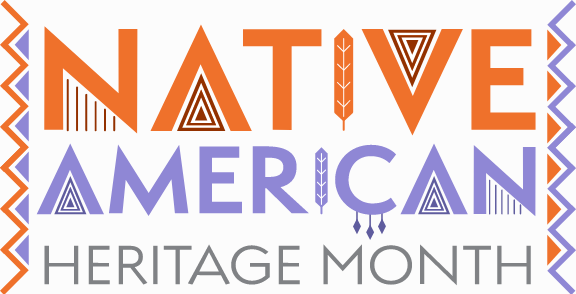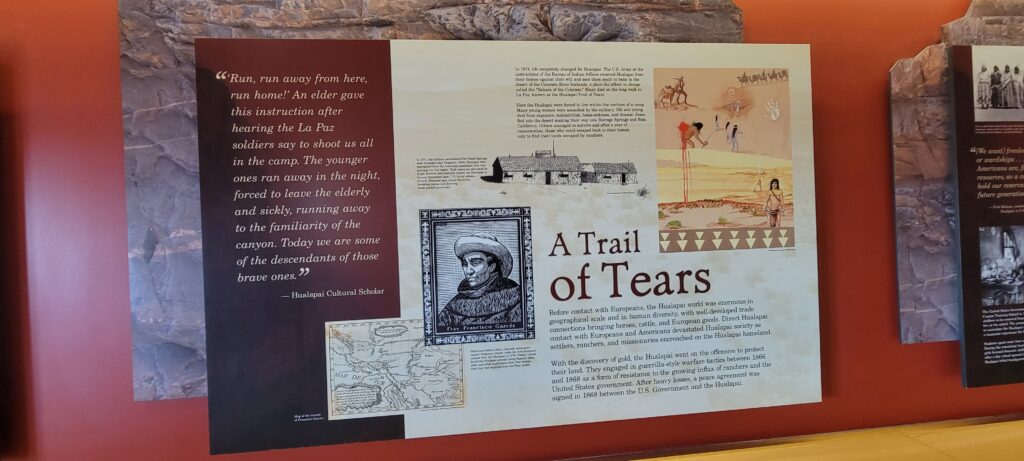Diverse Voices: U.S. Celebrates Native American Heritage Month

Native American Heritage Month logo by State of Virginia Government website.
By Daniel Winner | AC JosepH Media Correspondent
ATLANTIC CITY — The 33rd Native American Heritage Month is being observed by Americans across the country this November, bringing attention to the presence and resilience of today’s American Indians.
Declared a national observance on August 3, 1990, by U.S. President George H. W. Bush, the annual recognition of Native American heritage and identity has its origins in the work of a Cherokee/Osage Indian named Jerry C. Elliott-High Eagle, who in 1976 authored legislation for Native American Awareness Week in recognition of native peoples.
Ten years later, President Ronald Reagan pronounced November 23–30, 1986 as “American Indian Week.”
Today, Native American Heritage Month is celebrated in a variety of ways depending on the region. Participants may observe this month according to their background and what tribal nation they belong to or share a common history with. Native and non-Native peoples may celebrate separately, while some tribe members may even invite those outside their tribe to take part in traditional ceremonies as a way of bringing awareness to indigenous culture and fostering intercultural relations.
Some other events include art exhibitions showcasing traditional and modern indigenous crafts, viewing of Native American-inspired films, engagement in powwows, prayer circles, and more.
Many different tribes have historically inhabited the area that is now the state of New Jersey, but the most prominent are the Lenape people (pronounced “len-AH-pee”).

Over the course of European colonization, most of these groups relocated to other territories, such as Ontario, Wisconsin, and even as far as Oklahoma. However, many tribe members have continued to occupy, or later returned to the land of their ancestors. The state of New Jersey currently recognizes three of these tribes:
- Ramapough Lenape Indian Nation, also known as Ramapough Mountain Indians (North Jersey, Bergen County and Passaic County)
- Powhatan Renape Nation (South Jersey, Camden County and Burlington County)
- Nanticoke Lenni-Lenape Tribal Nation (South Jersey, Cumberland County)
All of these New Jersey tribes share a Lenape heritage (the “r” in “Renape” has its origins in a distinct dialect). The word “lenape” comes from the Unami language and means “real/original person.”
Lenape territory, known by indigenous peoples as “Lënapehòkink (homeland of the Lenape)” historically spanned from western Connecticut to northern Delaware, and included areas of eastern Pennsylvania, southern New York, and of course, New Jersey.
2023 has been a year of immense progress for indigenous New Jerseyans, as both the Ramapough and Nanticoke tribes have successfully reclaimed a portion of their ancestral territory.
About 300 years ago, the area around Split Rock Mountain, which straddles the border of Mahwah, and Hillburn N.Y., was once a sacred site to the Ramapough tribe’s ancestors.
Called “Tahetaweew” by Natives, the 54 acres of land was purchased by the Land Conservancy of New Jersey from the Rockland County Sewer District. In the spring of this year, the land was finally transferred back to the Ramapough Lenape people.
In South Jersey, the Native American Advancement Corporation (NAAC), led by president and CEO Tyrese “Bright Flower” Gould Jacinto, reclaimed 63 acres of land in Quinton Township, Salem County.
The Cohanzick Lenape people owned this land in the Burden Hill forest for thousands of years, before the tribe was forcefully evacuated by European settlers. Now the land is part of the new Cohanzick Nature Reserve.
The acquisition will provide a space to allow the public to engage in various projects, primarily nature conservation and wildlife management.
Native American Heritage Month presents an opportunity to celebrate the achievements of indigenous peoples and the contributions they have made to contemporary society. This is a time set aside to remind Americans that the First Nations are not remote fabrications: they are still here, and they remain part of the very fabric of the land as it stands today.
For more information on New Jersey’s indigenous communities, see their respective websites listed below.
- Ramapough Lenape Indian Nation: http://ramapomunsee.net/
- Powhatan Renape Nation: https://www.nativeamericanembassy.net/Pocahontas_Myth/http/www.powhatan.org/history/
- Nanticoke Lenni-Lenape Tribal Nation: https://nanticoke-lenape.info/
EDITOR’S NOTE: Daniel Winner has a double major in Religious Studies and Japanese from Penn State University and has traveled internationally to the Far East on several occasions. His insights on Buddhism and Asian culture give a unique view of historical and modern trends. He will be serving as a contributor for Front Runner New Jersey.
Follow Us Today On:
Note from AC JosepH Media: If you like this story and others posted on Front Runner New Jersey.com, lend us a hand so we can keep producing articles like these for New Jersey and the world to see. Click on SUPPORT FRNJ and make a contribution that will go directly in making more stories like this available. Thank you for reading.





